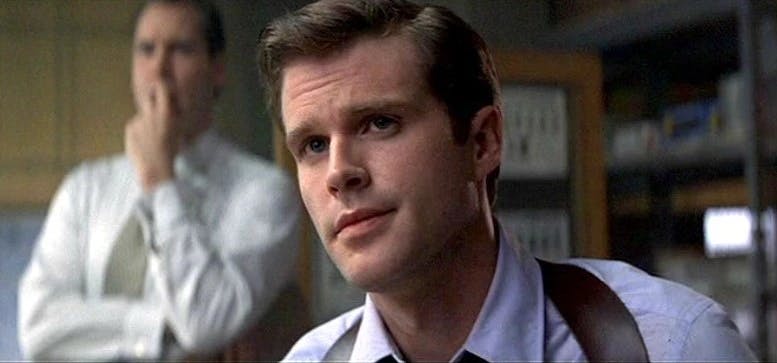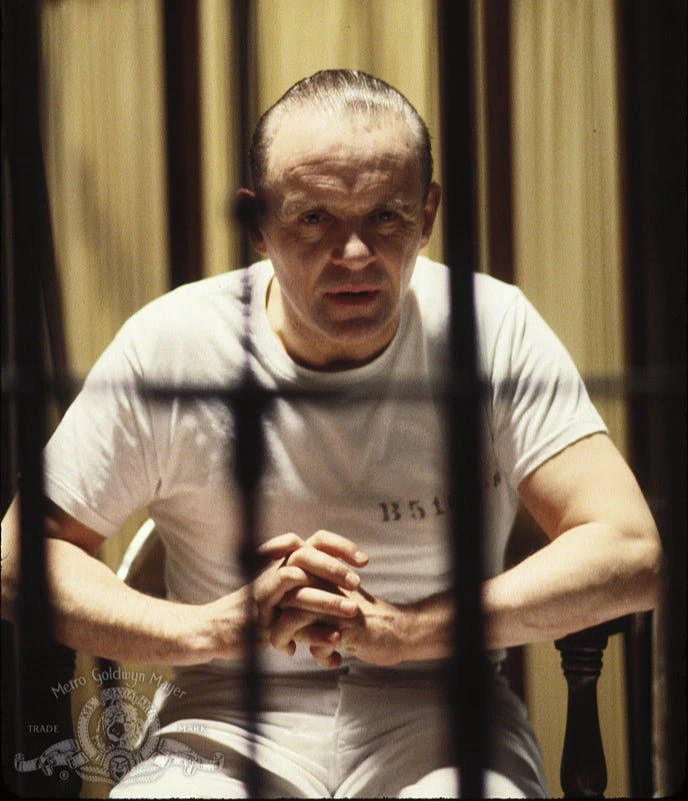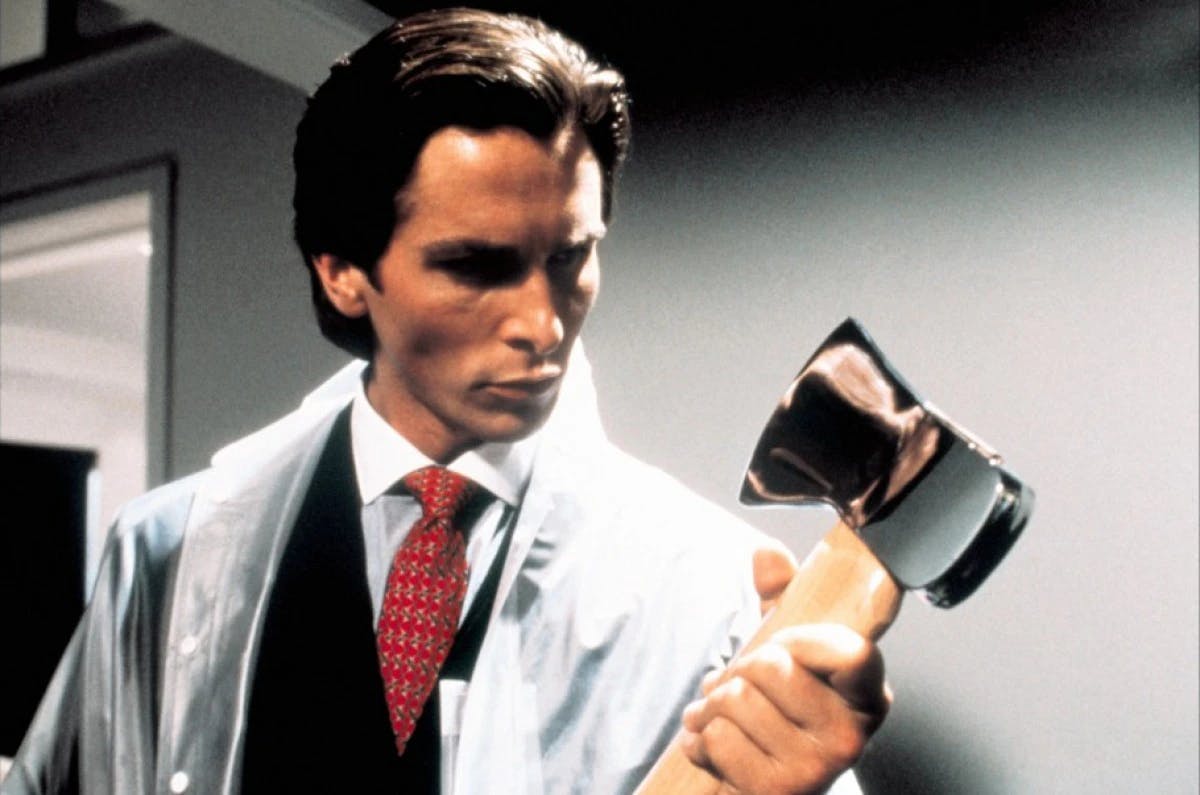Let's Stop Romanticizing Psychopaths In Film
Though psychopathy might be fascinating to explore intellectually, it’s not cool, it’s not sexy, and it certainly isn’t...romantic.

Psychopathy is most commonly conceptualized as 1) interpersonal and emotional deficits, and 2) a socially deviant lifestyle. Its first dimension entails superficial charm, a grandiose sense of self-worth, pathological lying, cunningness, lack of remorse, callousness, failure to accept responsibility for one’s own actions, and promiscuous sexual behavior. The latter involves proneness to boredom, poor behavioral control, a parasitic lifestyle, lack of realistic long-term goals, impulsivity, irresponsibility, childhood behavioral problems, and juvenile delinquency. It’s further characterized by many short-term marital relationships and criminal versatility.
Unlike psychopaths in much of popular media, the clinical psychopath doesn’t seem all that mysterious or sexy. So why the disconnect?
The Role of Media
At least partially, the media’s misrepresentation of psychopathy is to blame. In their paper for The Journal of Forensic Sciences, Drs. Michael Keesler and David DeMatteo discuss the shift in the news reporting of psychopathy. While older news stories used negative and cautionary language, recent articles have a more progressive tone. The scary, criminal psychopath has been displaced by the cold, corporate one.
The scary, criminal psychopath has been displaced by the cold, corporate one.
Historically, in film and TV, fictional psychopaths have embodied serial killers or cult leaders. Sometimes, these portrayals have confounded bizarre qualities, such as cannibalism or hysterical laughter, as characteristic of psychopathy. Think of Hannibal Lecter from Silence of the Lambs or Patrick Bateman from American Psycho. In one study, the researchers explored the relationship between psychopathy and film, analyzing 126 fictional psychopaths from 400 movies. These characters were analyzed by forensic psychiatrists and film critics. They concluded that over time, the presentation of psychopathy in film has become more accurate. However, despite this improvement, realistic fictional psychopaths are still quite rare.
Drs. Samuel Leistedt and Paul Linkowski provide a breakdown of the types of psychopaths we typically come across in fiction.
The Hollywood Psychopath

Films prior to 2000 have presented psychopaths as vain and stylish people with superior intelligence and a taste for intellectual stimulation, such as classical music, literature, or the fine arts. They have a successful career, a calm and calculating attitude, and exceptional talent for killing people. However, these traits are largely absent in real-life psychopaths.
The Psychopathic Psychiatrist

Dr. Hannibal Lecter popularized the psychopathic psychiatrist. He was a remarkably talented clinician, exceptionally knowledgeable, charismatic, and polite. He also happened to be a serial killer who made gourmet meals from the flesh of his victims. Such qualities are uncharacteristic of both psychopaths and (thankfully) psychiatrists.
The Clinical Psychopath
Perhaps duller, the realistic, clinical psychopath is unempathetic, cold, ruthless, remorseless – emotionally impoverished. He lacks self-insight and can’t plan ahead. Rather than sensational patterns of behavior, mood and emotional disturbances, as well as vulnerabilities, define such a character.
Another way to view fictional psychopaths is by classifying characters into “antagonist” or “protagonist” subtypes.
The Antagonist

Antagonist psychopaths are featured as evil incarnate – violent, sadistic, callous, cannibalistic even. Keesler and DeMatteo point to characters like Patrick Bateman from American Psycho, Mr. Blonde from Reservoir Dogs, Vernon Schillinger from Oz, and Hannibal Lecter from Silence of the Lambs as primary examples.
The Protagonist

The progressive, new-age, protagonist psychopaths are much more refined. Their psychopathic features are accompanied by positive traits, like superior intelligence, the rejection of social norms for a greater good or a noble goal, and physical attractiveness. These are characters like Michael Hall as Dexter Morgan in Dexter, Matt Damon as Tom Ripley in The Talented Mr. Ripley, and Penn Badgely as Joe Goldberg in You. All three actors are highly attractive men. Greater exposure to protagonist psychopaths has been associated with a higher endorsement of endearing characteristics for psychopaths, reflecting a type of romanticized understanding of psychopathy among laypeople.
Perhaps the perfect example of the romanticized psychopath is former Disney heartthrob, Zac Efron, as Ted Bundy in Extremely Wicked, Shockingly Evil and Vile.
Psychologists have expressed worry over the glorification, or even humanization, of violent criminals like Bundy in popular media, sharing that “media needs to be done in a very cautious manner due to the potential of contagion and romanticizing the topic” and that “we do not want individuals thinking that this may be a ‘cool’ thing to do to become famous.” They’re not wrong. In her article, Girls Who Love Ted Bundy, Dr. Katherine Ramsland explores young women’s unsettling obsession with the world’s most notorious serial killer, bringing attention to the hundreds of teens who have been role-playing Ted Bundy or other serial killers and their victims on TikTok.
Sensationalizing Mental Illness
Serial killers aside, the sensationalization of mental illness has been observed in other contexts, including teenage suicide. The Netflix series 13 Reasons Why was of great concern to the National Association of School Psychologists. The series inaccurately portrayed a young girl’s tragic suicide as the direct consequence of external stressors, as opposed to a combination of treatable mental illness and intolerable environmental stressors. The association speculated that impressionable youths might romanticize the choices made by the characters on the show and develop dangerous fantasies. Their worries were not unwarranted. In the month immediately following its release, suicide among youths (particularly boys) between ages 10 to 17 increased by 29% and remained elevated for the subsequent two months.
Suicide among youths increased by 29% in the month following the release of “13 Reasons Why.”
Following an episode of hospital drama Casualty featuring a man overdosing, with details of the drug (paracetamol) and the amount consumed, there was a 17% increase in overdoses the very next week, and a 9% increase the second week. Increases in overdose by paracetamol were more pronounced than overdose by a different drug. In her BBC article, Claudia Hammond further draws attention to an increase in suicides one month after a celebrity suicide in Taiwan; researchers suggested the extensive media reporting of the case was linked to a modeling or imitation effect among the public.
So when psychologists sound alarms on the misrepresentation of psychopaths and young people enacting fantasies of murder or suicide, they seem to be on to something.
Appealing to Women
Women, more so than men, are drawn to true crime stories. And men, more so than women, are represented in such media (likely because male psychopathy is far more common in the real world). Unsurprisingly then, charming and favorable portrayals of criminals like Bundy lure in young women and girls. A real-life villain like Bundy hasn't only been portrayed as the rapist and killer of 30 innocent women, but as a man who was capable of being kind and caring despite this darkness. However, Ann Rule, who personally knew Ted Bundy, noted he was “never as handsome, brilliant, or charismatic as crime folklore has deemed him.” His defense attorney, Polly Nelson, agrees with this sentiment, sharing that Bundy was “too obviously disingenuous to be truly charming” and “not that smart.”
Maybe then, there’s an element of denial in the women who look past Bundy’s heinous crimes. Dr. Ramsland suggests some women might wish to nurture the inner child in such violent killers. Others might have the false impression that they can sway a cruel and powerful killer to change his ways. And perhaps, some confuse the viciousness with masculinity and believe this can offer them protection. This should come as no surprise, given the sensationalized portrayal of serial killers as superior to the average man, physically, intellectually, emotionally, and sexually.
Those who become involved with convicted murderers have a history of abuse and deny their crimes.
Sheila Isenberg, author of Women Who Love Men Who Kill, writes that those who become involved with convicted murderers have a history of abuse, and deny the inmate’s crimes; that they develop fantasies to satisfy their desires and fail to live in the realities of their relationship. And though cautionary tales are not all too convincing to these women, Dr. Ramsland wonders if meeting surviving victims of serial killers might help them see otherwise.
Closing Thoughts
Glorifying mental illness and violent crimes in the media can have an adverse effect on the public – most disturbingly, on adolescents. When producing content on these subjects, we ought to consider balancing the benefits of entertainment against the potential harms of romanticizing such sensitive information.
Love Evie? Let us know what you love and what else you want to see from us in the official Evie reader survey.